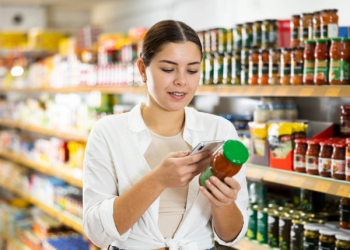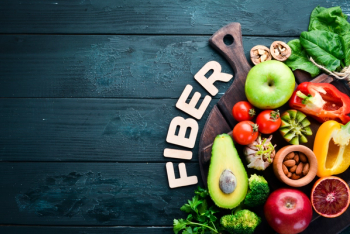
- Nutritional Outlook Vol. 19 No. 4
- Volume 19
- Issue 4
Stevia versus Monk Fruit: How Do They Compare in Formulation?
Comparing the formulation applications for stevia versus monkfruit
Whether used as a food/beverage ingredient or directly as a tabletop sweetener, both monk fruit and stevia have unique advantages. How do these natural sweeteners stack up in formulation? It depends on the application and who you ask.
Right up front is the cost difference. “While monk fruit has significant advantages over stevia in terms of taste and ease of formulation, stevia has a much lower cost in use, and this is the reason that stevia has a larger market share than monk fruit,” says David Thorrold, general manager, sales and marketing, for Illinois-based monk fruit extract supplier Guilin GFS Monk Fruit Corp.
Stevia and monk fruit have equal sweetening capacities. “On a weight-to-weight sweetness level, we know stevia (e.g., 95% Reb A) and monk fruit (e.g., 50% mogroside V) are equal in strength, each credibly purported to be about 200–250 times sweeter than sugar,” says Chris Tower, president of stevia and monk fruit ingredients supplier Layn USA Inc. (Newport Beach, CA).
Still, there are times when one ingredient may work better than the other due to its flavor profile. “Stevia works better in a citrus environment, while monk fruit and/or a stevia–monk fruit blend may work better in vanilla and flavors similar since the off-notes are more ‘melon rind’ in nature,” says Thom King, president of Steviva Ingredients (Portland, OR). Layn’s Tower says, “Monk fruit extracts in general deliver the maximum sweetness potential when formulated into foods and beverages containing neutral to high pH levels-e.g., low-acidic beverages and sodas, most dairy products, protein powder mixes, cereals, and bakery items.” Conversely, if added to low-pH products like highly acidic beverages and fruit juice, “monk fruit’s sweetness potential and efficacy is reduced on a relative basis,” Tower says, and that’s when it may be necessary to blend with other sweeteners.
As for off-notes, Tower says, “At very high usage levels, monk fruit may impart a fruity, ripe-fruit, or fermented-fruit off-flavor.”
Still, monk fruit suppliers say monk fruit is relatively easy to formulate with. According to Thorrold, monk fruit extracts lack the bitter aftertaste conventionally associated with stevia extract, so “it is much easier to formulate with and better tasting. This also gives it a broader range of applications than stevia,” he says. “There are a number of applications that already have some bitterness-for example, protein-based beverages-where the formulator wants to mask the bitterness. The bitter aftertaste of stevia only compounds the problem, whereas monk fruit is effective at both adding sweetness and masking bitterness.”
But stevia suppliers have made great strides of their own in improving the taste-and aftertaste-of stevia. Cargill (Minneapolis), for instance, developed its ViaTech system, which is the company’s platform for determining the best ratio of the stevia leaf’s more than 40 steviol glycosides in order to provide the best taste per application. And there are products in which stevia’s sweetness holds up better-such as in acidic beverages-compared to monk fruit. Cargill says ViaTech can achieve a remarkably high calorie reduction, between 30%–70% or greater, all while meeting product taste targets.
STORY CONTINUES ON PAGE 2
Sweet Green Fields (Bellingham, WA) says it has also found a “very unique blend of steviol glycosides from the stevia leaf” that, particularly for beverage formulators, provides an “indistinguishable” sugar taste while enabling high levels of sugar reduction, says Mel Jackson, PhD, vice president of science. The ingredient is called Intesse.
In fact, for alternative-sweetener suppliers in general, the goal is always an ingredient that is as sugar-like in taste and performance as possible, but not in calories. Cargill calls its EverSweet stevia ingredient, comprising Reb M and Reb D steviol glycosides, more sugar-like than Reb A stevia sweetener, making calorie cuts up to 100% possible in a carbonated soft drink, for example. Meanwhile, Faith Son, vice president of global marketing and innovation, PureCircle (Chicago), says the company’s new Zeta stevia line, focusing on ideal glycoside blends per application, “can achieve the deepest level of calorie and sugar reductions while delivering a clean, sugar-like taste profile.”
While stevia producers are continually working to breed better-tasting glycosides from the stevia leaf, Thorrold says that monk fruit is a different story. “While we are constantly innovating and investing in R&D and our supply chain, we don’t really look at monk fruit as a high-tech ingredient where there will be a breakthrough, next-generation product. I suppose it’s a bit like asking an apple producer what’s the next generation of apple ingredients,” he says.
“We celebrate the fact that monk fruit has a long history as a traditional food, and we’re happy that it already tastes great straight from the fruit,” he continues. “We think it’s a positive that, unlike other natural sweeteners, monk fruit doesn’t need a lot of science to figure out how to make it taste acceptable.” Tower agrees, saying that monk fruit’s biggest technical advantage is that it “does not require complicated taste modulation often needed for stevia.”
Also, there’s no reason why stevia and monk fruit can’t be friends. In fact, one of the reasons stevia/monk fruit blends exist is that both ingredients work well together. “We have found that a combination of the two cancel out each other’s off-notes,” says King. One example is Steviva’s MonkSweet LS, marrying monk fruit and stevia.
“Formulating monk fruit together with stevia has proven to deliver an ideal flavor profile by providing pleasant sweetness and mitigating astringency, bitterness, and herbaceous notes normally associated with stevia alone at the same sugar equivalence,” Tower adds.
“There are some nice synergies there, depending on the product, and people like having both on their labels, so they’ll actually use both products,” said Cargill’s Andrew Ohmes, global commercial manager, Corn Milling, North America, at this year’s Natural Products Expo West trade show. However, he added, “our ViaTech stevia leaf extract is able to achieve great sensory results on its own at a lower overall cost.”
There is, however, one category in which stevia is the clear leader: tabletop. It’s a point even monk fruit suppliers concede. “With respect to the tabletop-sweetener category, monk fruit has not held its own against stevia, and I don’t see that changing,” says Layn’s Tower. “I think stevia performs more ideally in the coffee matrix/environment, a large conduit for tabletop usage. It is what it is. You can’t win them all, and that’s okay,” he says.
Also read:
Articles in this issue
over 9 years ago
Editorial: Calling All Sports Nutrition Customersover 9 years ago
Chocolate Makers Focusing on Cocoa Flavanolsover 9 years ago
Astaxanthin: New Health Promises on the Horizon?over 9 years ago
Children and Dietary Supplements: Little Kids, Big Marketover 9 years ago
Dietary Supplement Production Challenges, Equipment Solutionsover 9 years ago
A 2016 Update: Promising New Science on Probioticsover 9 years ago
Weight-Management Supplement Strategies for a Skeptical Publicover 9 years ago
Stevia and Monk Fruit: What Makes a Natural Sweetener Natural?Newsletter
From ingredient science to consumer trends, get the intel you need to stay competitive in the nutrition space—subscribe now to Nutritional Outlook.





